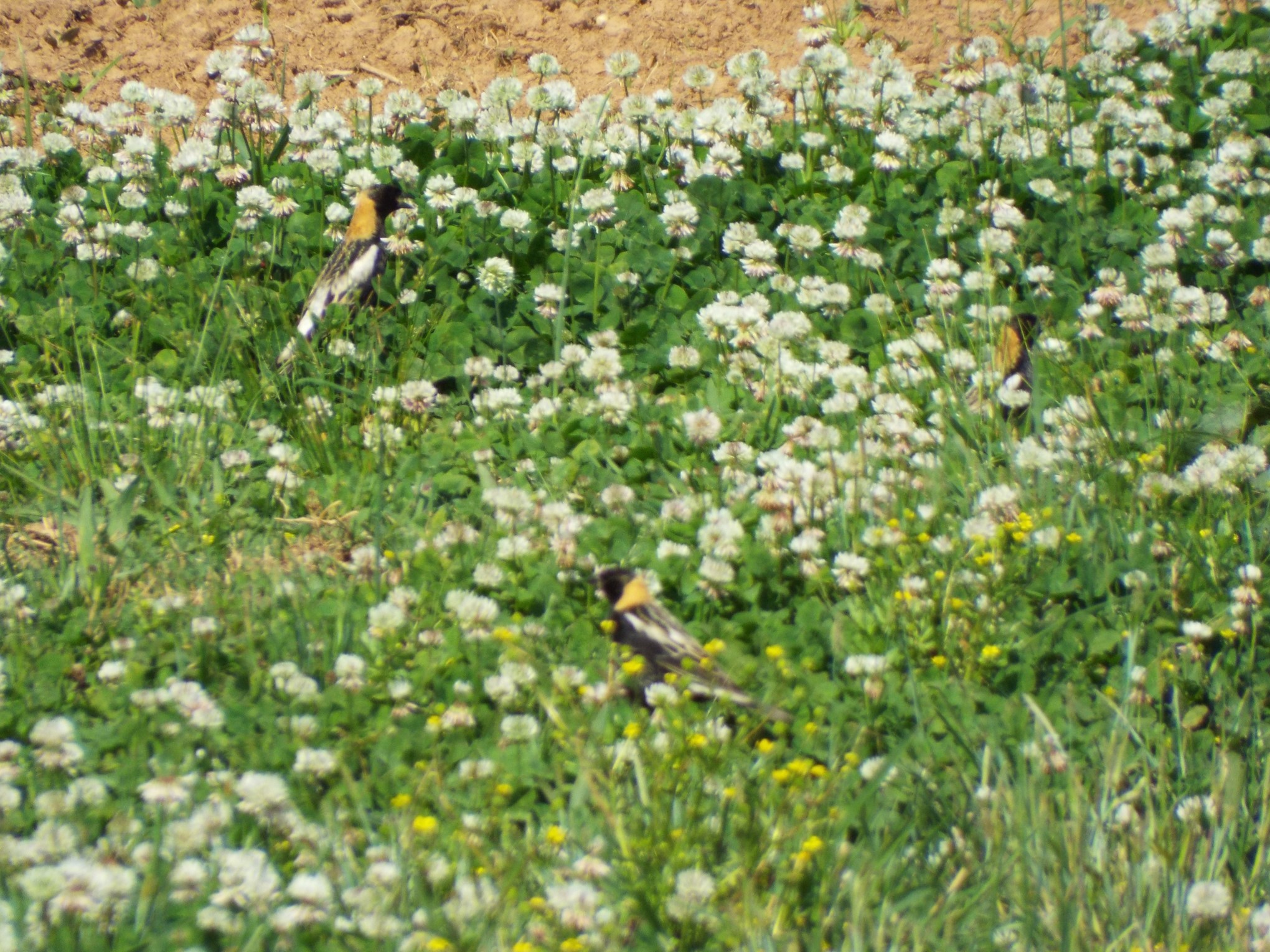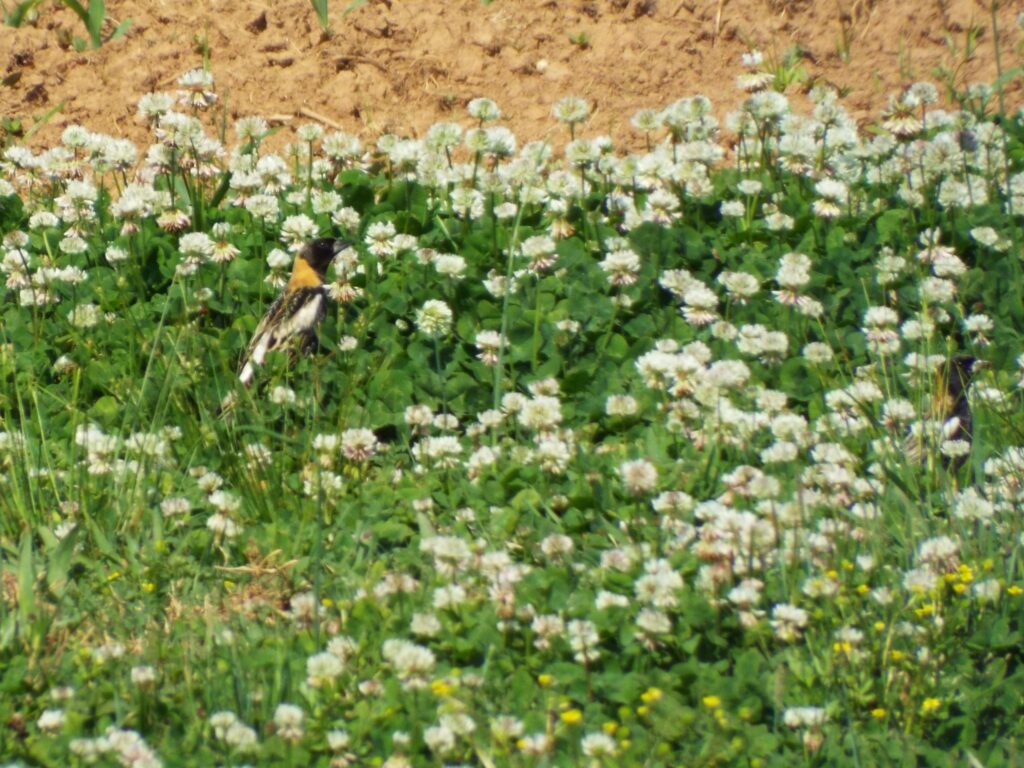


This week for Flora and Fauna Friday we watch for the descent of the infamous Rice Bird, the Bobolink (Dolichonyx oryzivorus).
Bear with me a minute as we cast our mind’s eye back some two-hundred years. Edisto Island, and the whole of the ACE Basin, looked quite different then. Sea Island Cotton blanketed nearly every inch of the sea islands’ sandy plains. In parallel between the upland and the saltmarsh, Carolina Gold Rice filled our swamps and freshwater marshes with tens of thousands of acres of golden, swaying grains. Just as surely as the rice would gild the marsh each autumn, a golden storm cloud would soon brew and descend upon it. Bobolinks, flocking by the thousands, once called the Lowcountry’s rice fields home, most unwelcome guests for the holiday season. Fast forward back to today and a mere dozen Bobolinks ‘most anywhere on the Sea Islands is a welcome sight to see.
The Bobolink is a mid-sized songbird in the Blackbird family, Icteridae. They’re a striking species unmistakable here for anything else. In spring, males flaunt a raven-black underside, silver shoulders and back, and a balding head of permed blonde locks. Quite the iconic fit. Fall males, and females year-round, look very different, but just as handsome. They wear streaky plumage of ebony-brown on the back diffused down into golden-tan on the belly, accented on the face with a strong pale eyebrow and dark line behind the eye. It’s a perfect camouflage for blending into the bending boughs of an overladen rice field. Their song is quite unique as well, a bubbly jumble of disjointed digital tones harshly strung together into a chaotic rambling.
Bobolinks spend their winters down in the plains of South America and nest in summer in the northern United States. They only pass through South Carolina during migration, briefly barreling through the State in spring but lazily lingering in fall here in the Lowcountry. They’re most often encountered in active agricultural fields, feasting on fallen grains and insects in small flocks, as well as in old rice fields within our tidal freshwater marshes, as if reminiscing of days long past. Back in the Antebellum during the heyday of Carolina Gold Rice, there was never such a thing as a small flock of Bobolinks, only imposing leviathan storms that came surging over the dikes, countercurrent to the September Gales. But that past is behind us.
Bobolink populations have declined tremendously over the last century. Before then, they ballooned well above their historic norms thanks to the consequences of European colonization and agriculture. Land clearing for agriculture in the northern United States expanded their nesting grounds, the same in South America bolstered their wintering grounds, and the booming rice industry in South Carolina gave them a fall feast along their southward journey that no bird could ignore. This cycle continued for a couple centuries, swelling the ranks of the Bobolink in kind. Here in South Carolina, the birds were seen as a nuisance and agricultural pest, but also a delicacy. Bobolink flocks were hunted by the thousands each fall, both for pest control and cuisine. Despite being small, their staggering abundance and the rich, buttery flavor of their meat made them a worthwhile target for market hunting. However, in the twentieth century, things changed rapidly. Rice culture had dropped off dramatically in South Carolina at the start of the 1900s and several laws prohibiting the market hunting of wildlife were passed in the first two decades. These factors de-coupled the Bobolink from our culture and cuisine here in South Carolina, turning it into a memory of the past. But regardless of being relegated to the annals of Charleston’s history, Bobolink populations continued mostly unabated range-wide for several more decades. Yet by the 1940s, agricultural practices began to shift in their northern nesting grounds. The tractor had thoroughly made its way to the prairies and plains, converting hayfields and native grasslands to neat fields of unsuitable crops for Bobolink nesting. This was followed by widespread insecticide use in the 1950s, decimating the populations of arthropods they relied upon to feed their young. Again in the 1970s came selective herbicides paired with advanced crop cultivars, obliterating the remaining native habitats and weedy field borders Bobolinks need to nest. Although there aren’t many hard numbers to lean on, evidence indicates towards a nearly 90% population loss since the turn of the twentieth century. A nearly two-thirds decline between today and the 1960s has been well documented by ornithologists.
The plight of the Bobolink is a dire fate shared by many grassland bird species across the United States. Prairies, plains, grasslands, savannas, pollinator habitat, snake-y lookin’ old fields, whatever you want to call them, they’re a habitat type that’s a rare commodity these days in much of this country. They’re also a bastion of biodiversity built by native plants and relied upon by scores of specialized animals. Species like the Boboloink can’t survive without them. Native grasslands are important not only to protect where still present, but also to create, restore, manage, and maintain where they historically occurred. They only exist today due to the divine intervention of natural disasters, or regular deliberate action by mankind. If we don’t intentionally protect and promote our grasslands, we’ll assuredly reap the ruin of our natural history and the loss of myriad species, to include our Bobolink.